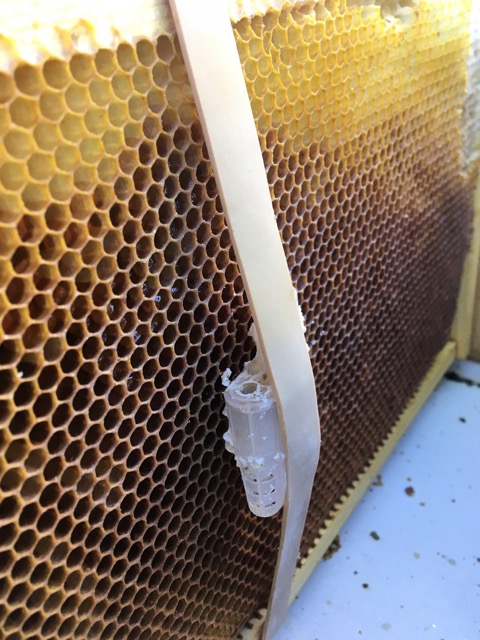Yes, I’m a slacker with blogging!
But that doesn’t mean we quit the most expensive hobby. I’ll give a list of updates and then try to remain consistent throughout this season.
1. This has been a very successful year with honey and lip balm sales. We’ve really gotten to know more of our neighborhood, which is awesome!
2. The lip balm container problem may have been resolved.
3. Mighty Mite Thermal Treatment is our current attempted method for dealing with mites.
4. We went into winter with 6 hives and entered spring with 3.
5. We did another on-site presentation with some of our neighborhood children.
6. We attended the annual Geneva Bee Conference.
7. Two more package bees were purchased and we briefly had 5 hives.
8. One of our hives that swarmed (quite an event that I’ll write about another day) actually absconded.
9. With 4 hives left, another one swarmed- much too high to catch.
10. For the first time, we purchased a queen.
11. With 10 queen cells brewing (as potential replacements for that last swarm) several hive splits were attempted.
12. More than anything, we really want to figure out queen rearing. $$$
13. We’ve decided to enroll in the eCornell Master Beekeeper program.
Here’s a little swarm video:
Interesting Fact: Our hive that absconded? That was the last of the mean-queen descendants, so we are glad they left.






 We made this 2 minute visit only to remove the queen cage. Every time we go into the hive and mess around with the frames, we set the worker bees back a few days.
We made this 2 minute visit only to remove the queen cage. Every time we go into the hive and mess around with the frames, we set the worker bees back a few days. First, we followed the advice of several YouTube videos and sprayed the box down with sugar water. This helped the bees concentrate more on eating and cleaning each other off rather than attacking a potential enemy.
First, we followed the advice of several YouTube videos and sprayed the box down with sugar water. This helped the bees concentrate more on eating and cleaning each other off rather than attacking a potential enemy.

